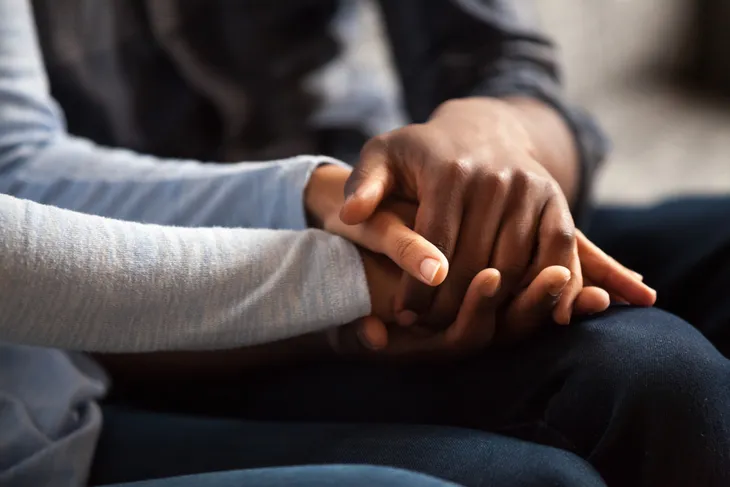Among the many emerging trends on social media, one recent concerning fad is a casual and often inaccurate portrayal of trauma and post-traumatic stress disorder, or PTSD – along with an array of questionable interventions suggested for its cure.
But what really is PTSD, who suffers from it, and what are the available treatments?
As a psychiatrist specializing in trauma, I’ve worked with hundreds of people with PTSD. Some are refugees, first responders and survivors of torture and human trafficking. Others have survived childhood trauma, shootings, assault, rape or robbery.
As part of my outreach, I post educational material about trauma and PTSD on social media, so my news feeds often contain misleading material along these lines:
“Procrastination is not laziness. It is childhood trauma.”
“Trauma test: What image did you see first? A shark, A leg?”
“People who say sorry for no reason have PTSD.”
Mental health advocacy work has led to great progress in making the public aware of trauma and overcoming its stigma. But misuse of terms such as “trauma,” “childhood trauma” and “PTSD” has filled the social media sphere with misinformation. It is often spread by people with a financial or emotional incentive, such as those seeking followers, selling tests, therapies, interventions, coaching and more.
Such posts treat trauma and PTSD as something that’s trendy, at times even romanticizing trauma. In turn, this trivializes the suffering of those who really have endured traumatic experiences. It can also create confusion for those with a real need for help and prevent them from receiving the right support.
Trauma explained
In popular culture and in the everyday vernacular, the word trauma is often used too loosely. As a result, on social media a difficult breakup or an argument with a family member might be portrayed as traumatic. While these experiences could be highly stressful, they are not considered trauma in the clinical world.
The field of psychiatry defines trauma as direct exposure to actual or threatened death, serious injury or sexual violence. That includes experiences such as war, assault, sexual abuse and rape, robbery, being shot at, severe car accidents and natural disasters. Trauma exposure is common among, though certainly not limited to, urban populations.
Trauma exposure does not necessarily have to be direct; it can also happen by witnessing or being near the event or by exposure to its aftermath. This is what often happens to first responders, those in the vicinity of or exposed to the aftermath of mass shootings, and refugees, all of whom see the worst of what humans do to each other.
The immediate response to trauma can include shock, severe anxiety or panic, confusion, helplessness, constant recall of the event, feeling on edge, difficulty sleeping, anger, guilt or physical discomfort. Trauma can have numerous long-term effects, including anxiety, difficulty with trust, depression and substance use.
PTSD explained
Not everyone who experiences trauma has PTSD. For the majority of people exposed to trauma, symptoms subside over time. But some people remain in a constant state of “fight or flight,” a physiological response in which the brain stays fully alert to ensure escape or to neutralize a real or perceived danger.
When the severity of symptoms passes a specific threshold, mental health clinicians consider a PTSD diagnosis. To be diagnosed with the disorder, the person must have one or two symptoms from all of the following categories:
- “Intrusion” symptoms, such as recurring, unwanted memories of the traumatic event, or frequent nightmares or flashbacks as if the event is happening again. This includes seeing the scenes, hearing the sounds or experiencing the smells of the event.
- Intense avoidance of anything that is a reminder of the trauma, including thoughts and memories of the event, people who could resemble the perpetrator, and places or times of day that are associated with where, when or how the trauma happened.
- Persistent negative emotions and thoughts, such as anxiety, sadness, guilt, a negative perception of self – that is, a feeling that you’re permanently damaged – or a mistrust of the world. This might include an inability to experience positive emotions.
- Hyperarousal – meaning constantly being on the lookout for danger – and being easily startled or angered and being unable to sleep.
Getting help
Like any other medical condition, a diagnosis of PTSD must be made by a mental health professional, preferably one skilled in trauma and PTSD. Some people endure certain symptoms without meeting all criteria for PTSD. If this causes significant social, academic or occupational dysfunction and distress, the person will still need help.
If you have endured traumatic experiences, first understand that PTSD is not your identity. It is a disease that can be and should be treated. Getting an evaluation from your primary care doctor is the first step. They may refer you to a mental health professional. Or you can reach out directly to a psychiatrist, a clinical psychologist or a licensed social worker for an evaluation.
Your insurance provider can help you find a therapist or psychiatrist, preferably specialized in trauma. You can also find a list of providers through the Anxiety and Depression Association of America. If you don’t have insurance, you can get help at a local community mental health clinic or a federally qualified health center.
If a diagnosis is confirmed, know that you do not have to suffer for years to come. There are effective and safe psychotherapy treatments that can help process the traumatic memories, overcome the related negative thoughts or feelings of guilt and shame and help overcome avoidance of normal life situations because of the trauma.
In my newly published book, I discuss new, cutting-edge treatments as well as stories from those who overcame their illness.
For instance, our team has created AI-enhanced mixed reality technologies to produce immersive and interactive diverse situations of encounters with digital humans. This will allow the patients to, for example, experience the sensation of being in a crowded grocery store, with their therapist alongside to help them navigate and overcome their fears.
Medications can also help. Often labeled as antidepressants, these medications are safe and nonaddictive, and they can lower the intensity of anxiety to a level that allows the patients to deal with their fears.
Lifestyle changes like diet, mindfulness and exercise can also help a lot.
I have seen many traumatized people get back on their feet and resume their normal lives after the right intervention and lifestyle adjustments. Those who continue to have some symptoms often manage to build life around them without letting the trauma take away the joy and prosperity of their lives.
Arash Javanbakht, Associate Professor of Psychiatry, Wayne State University
![]()
This article is republished from The Conversation under a Creative Commons license. Read the original article.





